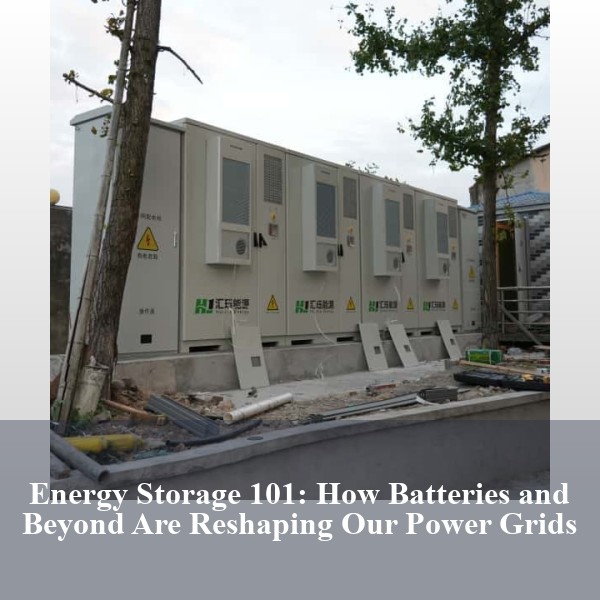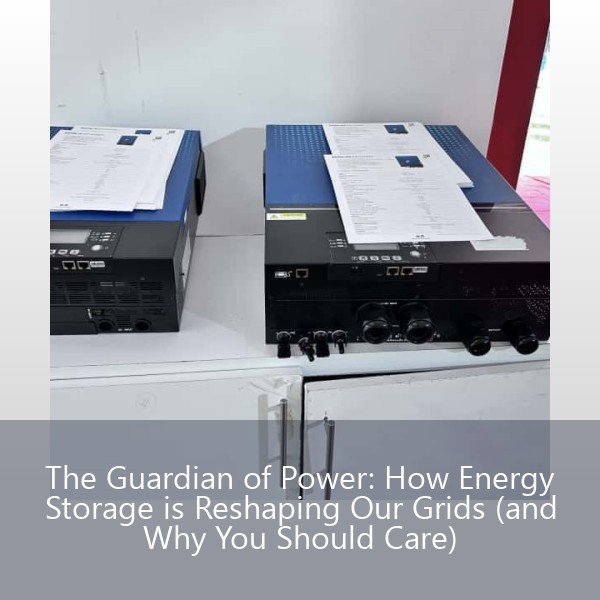How Digitally Connected Energy Storage Networks Are Reshaping Our Power Grids

The Brain Behind Modern Energy: Why Connectivity Matters
your local power grid trying to balance renewable energy sources like a rookie juggler handling flaming torches. Now enter the digitally connected energy storage network - the equivalent of giving that juggler a smart assistant and night vision goggles. These networks aren't just battery clusters; they're the Swiss Army knives of energy management, using real-time data to make split-second decisions that would make Wall Street traders jealous.
Three Shockingly Simple Reasons Utilities Can't Ignore This Tech
- 72% faster response to demand spikes compared to traditional systems (Department of Energy 2023)
- $4.7 billion saved annually through predictive maintenance alone
- 40% increase in renewable integration capacity
Anatomy of a Smart Energy Ecosystem
Let's dissect this technological chameleon. A true digitally connected energy storage network combines:
The Nervous System: Communication Protocols
Imagine your batteries texting each other like teenagers. OpenADR 3.0 and IEEE 2030.5 standards act as their emoji-filled language, enabling:
- Sub-100 millisecond response times
- Self-healing grid capabilities
- Multi-vendor interoperability (no more "Apple vs Android" energy wars)
The Brain: AI-Driven Optimization Platforms
California's CAISO grid operator recently pulled off a magic trick - their AI platform balanced 97% renewable penetration for 10 hours straight. How? By treating energy storage like Tetris blocks, constantly rotating batteries based on:
- Weather pattern predictions
- Electricity pricing curves
- Equipment health metrics
Real-World Applications That'll Make You Say "Why Didn't We Do This Earlier?"
In Germany's Schwerin region, they've created what locals call the "Energy Avengers Initiative" - a network of 15,000 home batteries acting as a virtual power plant. During last winter's energy crisis, this setup:
- Prevented 8 regional blackouts
- Earned participants $780 average annual credits
- Reduced grid strain by 62% during peak hours
The Tesla Powerpack Paradox
When Tesla deployed its South Australian Hornsdale facility, critics joked about "Elon's giant phone charger." Three years later, it's:
- Saved consumers $150 million in grid costs
- Stabilized frequency 70% faster than conventional systems
- Become the poster child for digitally connected energy storage networks
Future Trends: Where Rubber Meets Road
The next wave? Think edge computing meets energy storage. Companies like Fluence are experimenting with "brain-in-battery" architectures where each unit makes autonomous decisions. It's like having a democracy of batteries instead of a dictatorship - less centralized control, more swarm intelligence.
The Blockchain Bonus Round
Pilot projects in Tokyo are testing blockchain-enabled peer-to-peer energy trading. Picture your neighbor's solar panels automatically selling excess power to your EV charger through smart contracts. Early results show:
- 22% reduction in transmission losses
- 15% higher renewable utilization
- Real-time pricing that makes Uber surge pricing look primitive
Common Speed Bumps (and How to Jump Them)
Not all roses and sunshine though. Cybersecurity remains the elephant in the control room. The North American Electric Reliability Corporation (NERC) reports:
- 142% increase in grid-related cyber attacks since 2020
- Average breach costs soaring to $4.3 million
The Interoperability Tango
Manufacturers are finally playing nice. The recent Open Storage Alliance initiative has standardized:
- Universal API protocols
- Plug-and-play hardware interfaces
- Cross-platform diagnostics
What Utilities Won't Tell You (But Your Wallet Should Know)
Here's the kicker - these networks aren't just for big players. Residential setups using technologies like Enphase's IQ8 system now offer:
- 24/7 energy independence for under $15k
- Automatic grid disconnection during outages
- Seamless integration with existing solar arrays
As the sun sets on traditional grid management, one thing's clear: digitally connected energy storage networks aren't just the future - they're the present rewriting its own rules. And if you're still relying on last-century infrastructure, well... let's just say you might want to keep candles handy.
- Pre: Indonesia's Renewable Energy Landscape and Storage Solutions in 2020
- Next: The Unsung Heroes: How Auxiliary Services Energy Storage is Revolutionizing Power Grids
Related Contents

Power 5.5KW Solar Energy Storage System U-Energy: Your Home's New Energy Swiss Army Knife
electricity bills have become the uninvited guest that overstays its welcome. Enter the 5.5KW Solar Energy Storage System U-Energy, the Clark Kent of home energy solutions that transforms into Superman when grid power fails. This isn't just another shiny box for your garage; it's the brainchild of engineers who probably dream in kilowatt-hours.

Energy Storage 101: How Batteries and Beyond Are Reshaping Our Power Grids
your smartphone battery dies right before you snap that perfect sunset photo. Annoying, right? Now imagine an entire city's power supply blinking out during a heatwave. That's where modern energy storage solutions come into play - and they're doing for our electrical grids what pocket-sized power banks did for our Instagram habits. This energy storage essay will unpack why storing electrons has become the hottest ticket in the clean energy revolution.

The Guardian of Power: How Energy Storage is Reshaping Our Grids (and Why You Should Care)
Ever wondered what happens to solar energy when the sun clocks out? Or where wind power hides during calm days? Enter The Guardian Energy Storage – not a comic book hero, but the real-life savior of our renewable revolution. From Tesla's massive Megapacks to quirky gravity-based systems, energy storage solutions are rewriting the rules of how we keep lights on. Let's unpack this electrifying topic that's making utility engineers lose sleep (in a good way).
